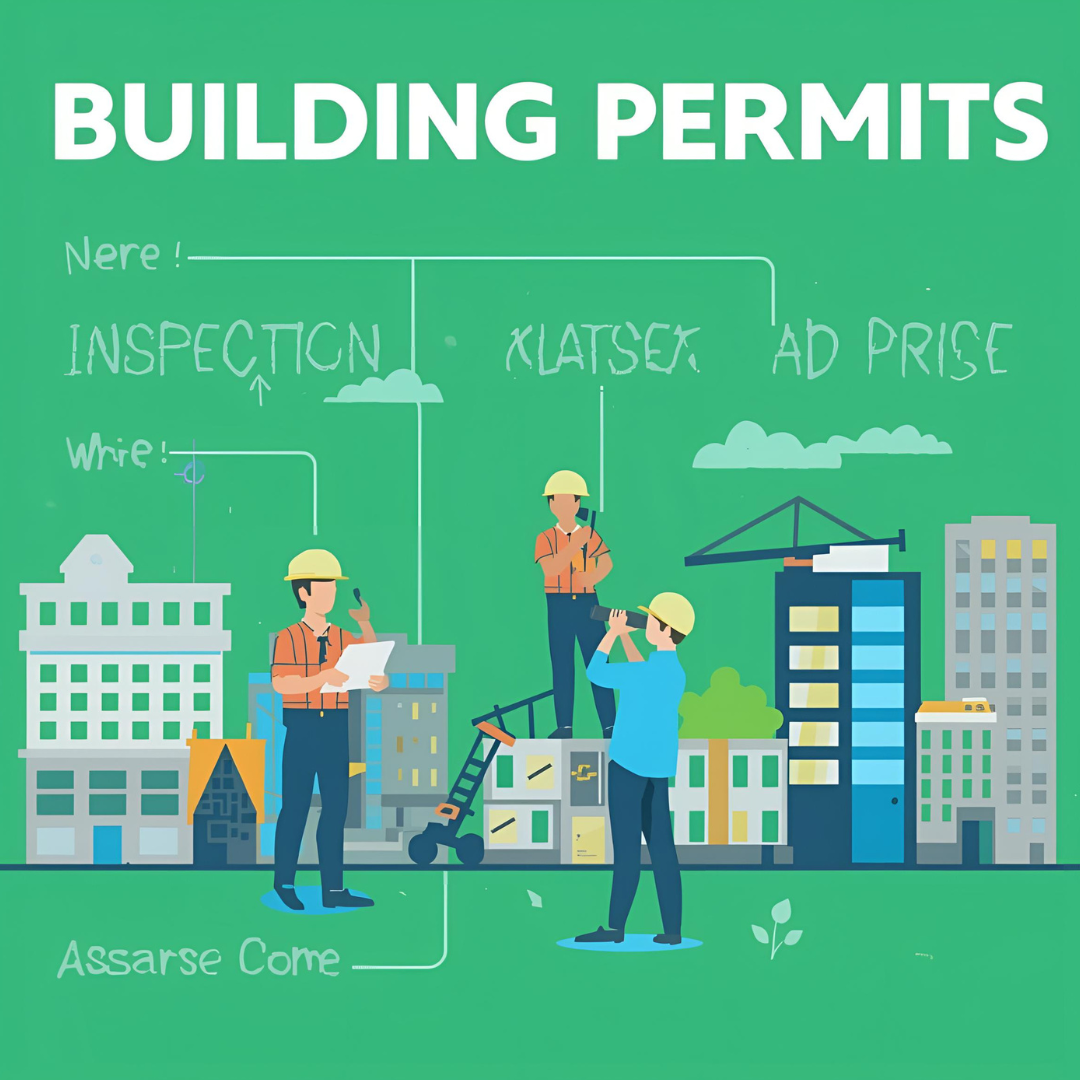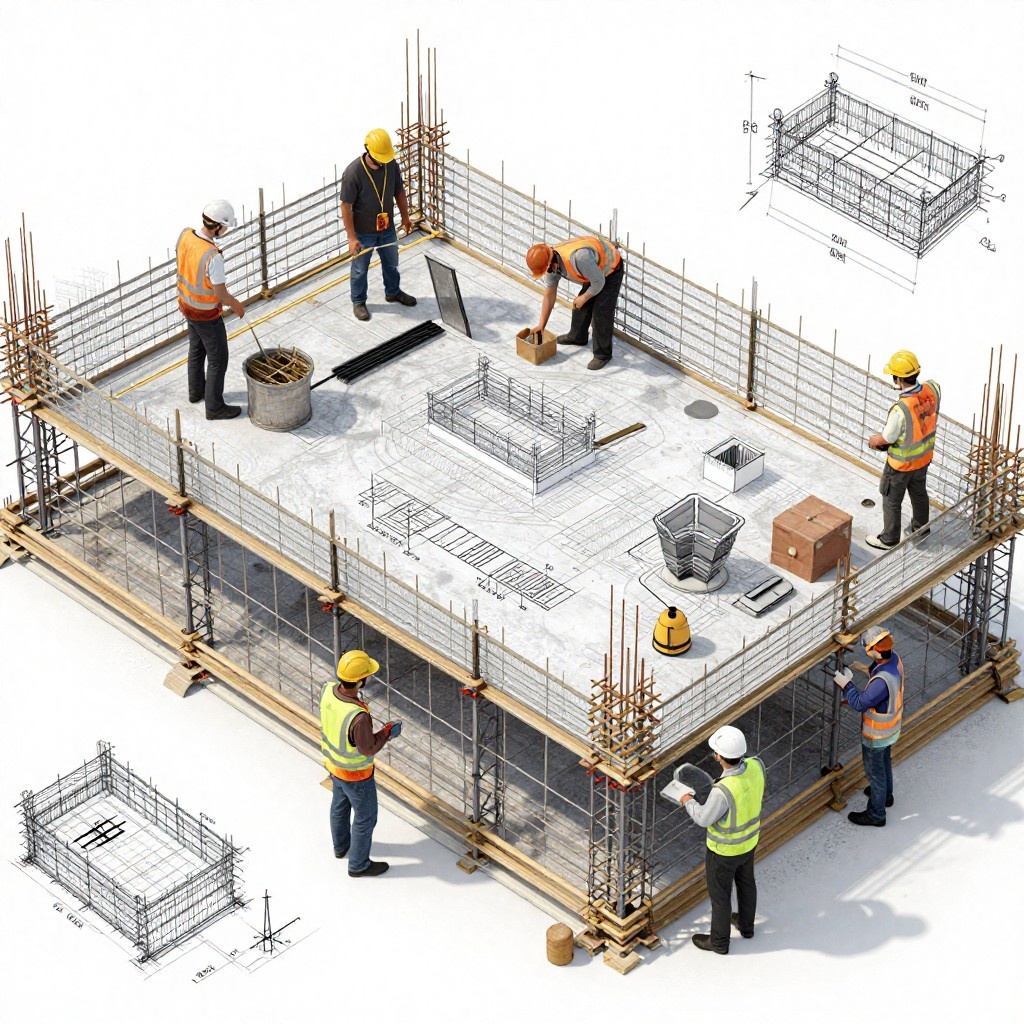Introduction
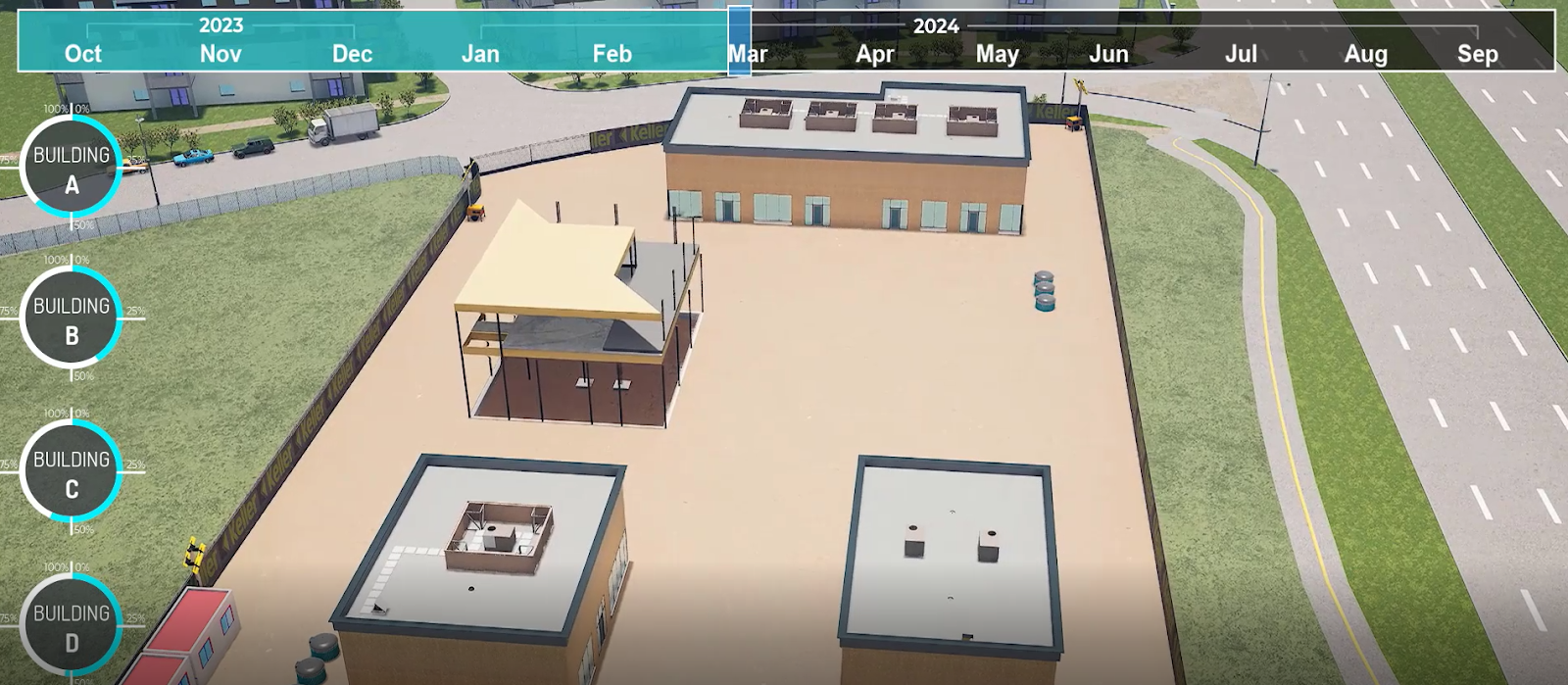
In today’s fast-paced construction industry, efficiency and accuracy are paramount. One of the most transformative technologies driving this change is 4D simulation. By integrating time as the fourth dimension into 3D BIM models, 4D simulation revolutionizes how projects are visualized, scheduled, and managed. This article explores how 4D construction planning is reshaping the industry, offering stakeholders enhanced clarity and control throughout the project lifecycle.
BIM Dimensions
BIM has changed a lot over the past decade. There are multiple dimensions associated with BIM, which tell us about the stage of the project and scope of the project. It plays a very crucial part in deciding what all needs to be done, which can further help in minimizing work and reducing cost.
A few of the BIM dimensions are
4D BIM – Scheduling and Time
4D BIM adds the dimension of time to 3D models. This enables detailed construction scheduling and sequencing, helping teams visualize each phase of a project.
5D BIM – Budgeting and Costs
5D BIM integrates cost data, enabling accurate budgeting and cost estimation alongside visual progress.
6D BIM – Environmental Impact and Sustainability
Focuses on sustainable building practices by incorporating energy modeling and life cycle assessments.
7D BIM – Maintenance and Facility Management
Extends the BIM model to include long-term operations and maintenance data.
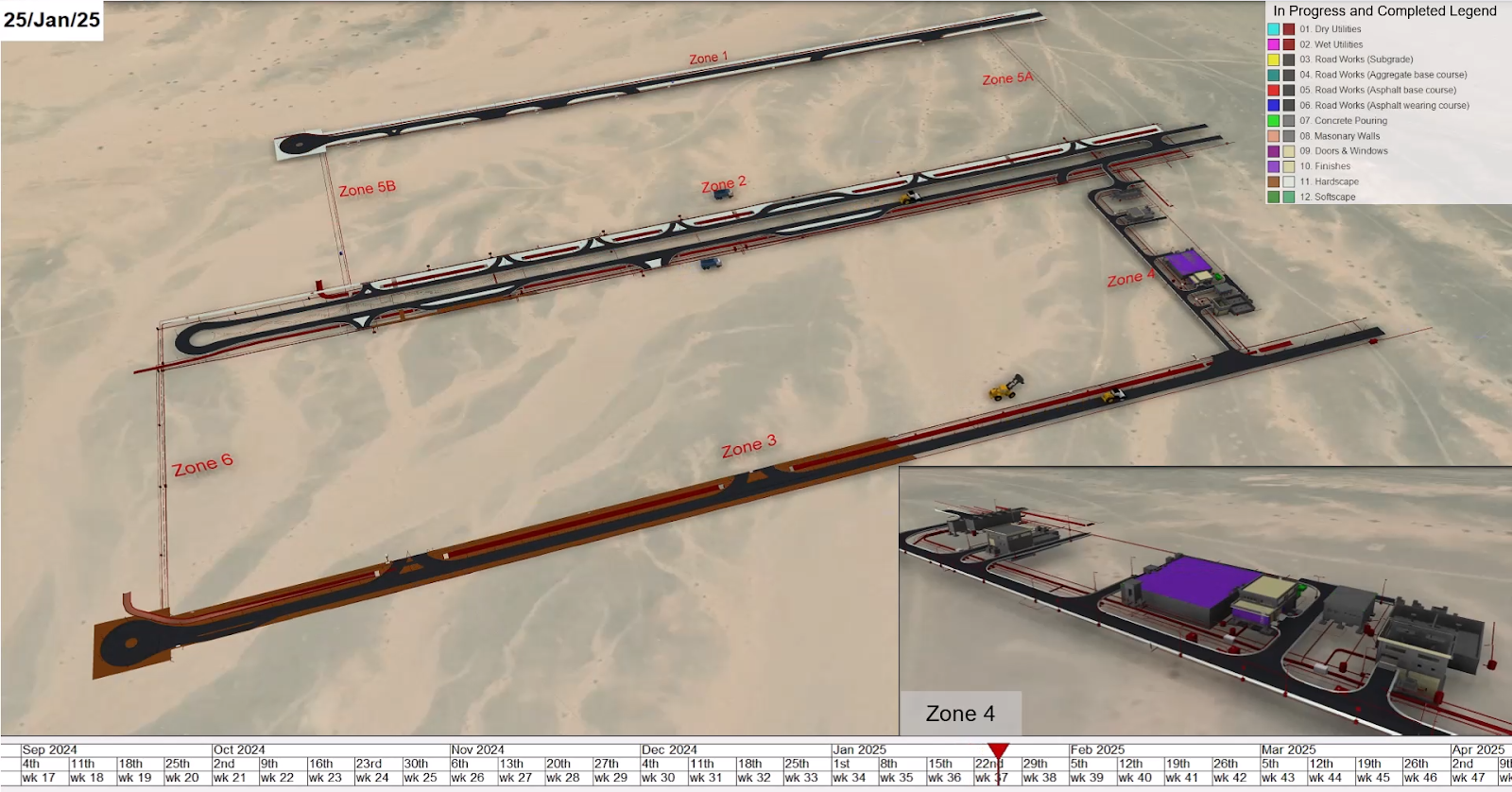
What is 4D Simulation?
4D BIM is an elite BIM process by which 3D models of a product are integrated with a project timeline to create a time integrated with the “fourth dimension.” While 3D models include information about the model elements, when you add the time component, you are able to have a 4D BIM where project teams can visualize every stage of the project over time. Such an interactive approach allows the stakeholders involved to be able to better plan, simulate, and optimize the construction processes than the older methods allowed them to do.
4D BIM, in essence, provides a visualization of the construction sequence to help identify conflicts, manage resources, and coordinate work. Being able to “visualise” the temporal evolution of the project permits project managers, architects, engineers, AND contractors to co-operate to minimise mistakes AND attain project objectives with fortress accuracy.
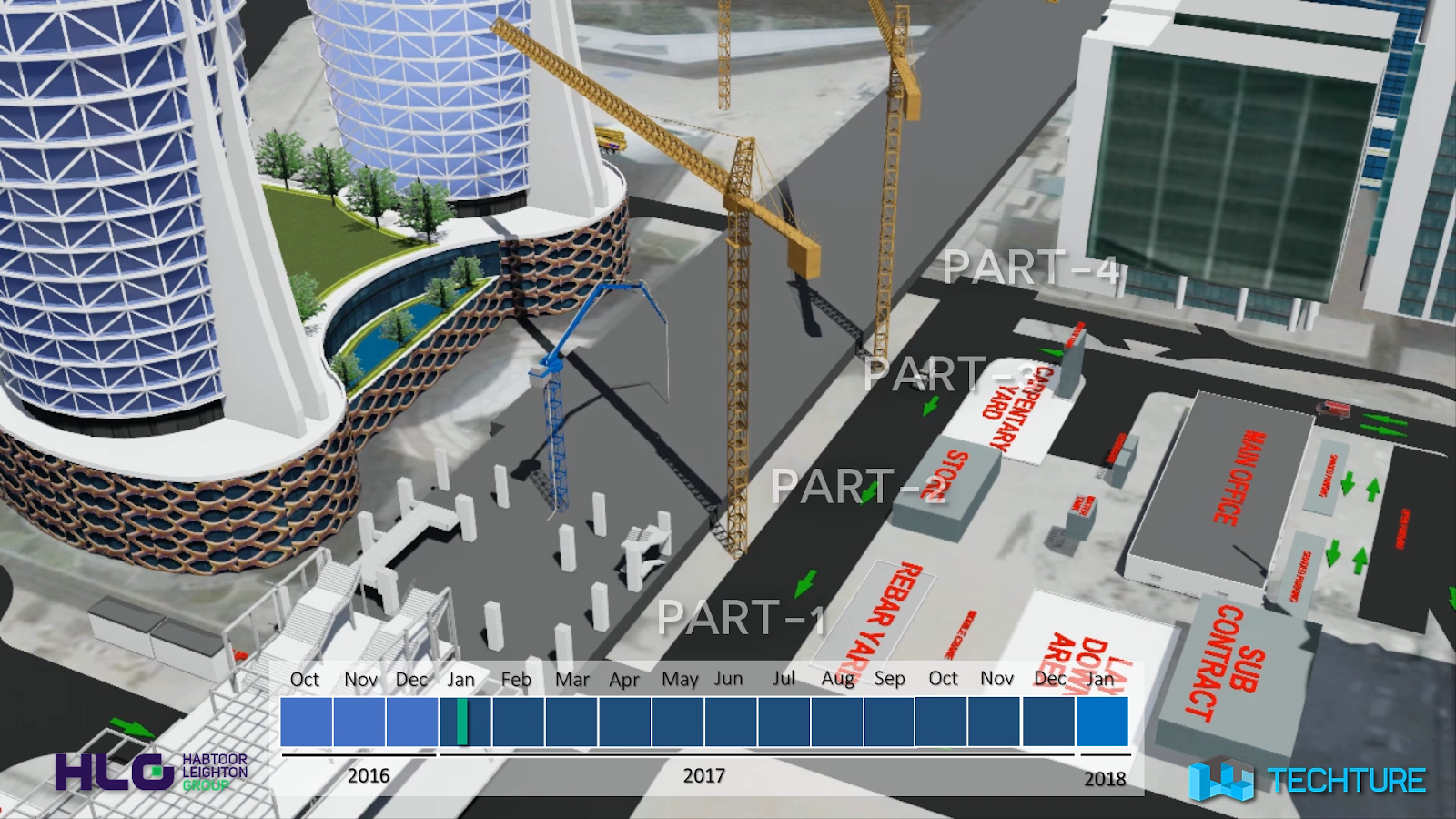
From Blueprints to 4D BIM: The Evolution of Construction Planning
Traditionally, construction relied on manual blueprints and simple Gantt charts. With the advent of CAD, design documentation became digital but lacked temporal intelligence.
4D BIM represents a leap forward. It combines visual detail with time-based data, allowing for project timeline visualization and real-time project tracking. Today, construction planning is no longer static; it’s a living, interactive model that adapts with the project. By visualazing the the construction sequence in advance, the client can have a clear idea about the project cost and timeline, which will further save him from future complications and project delays.
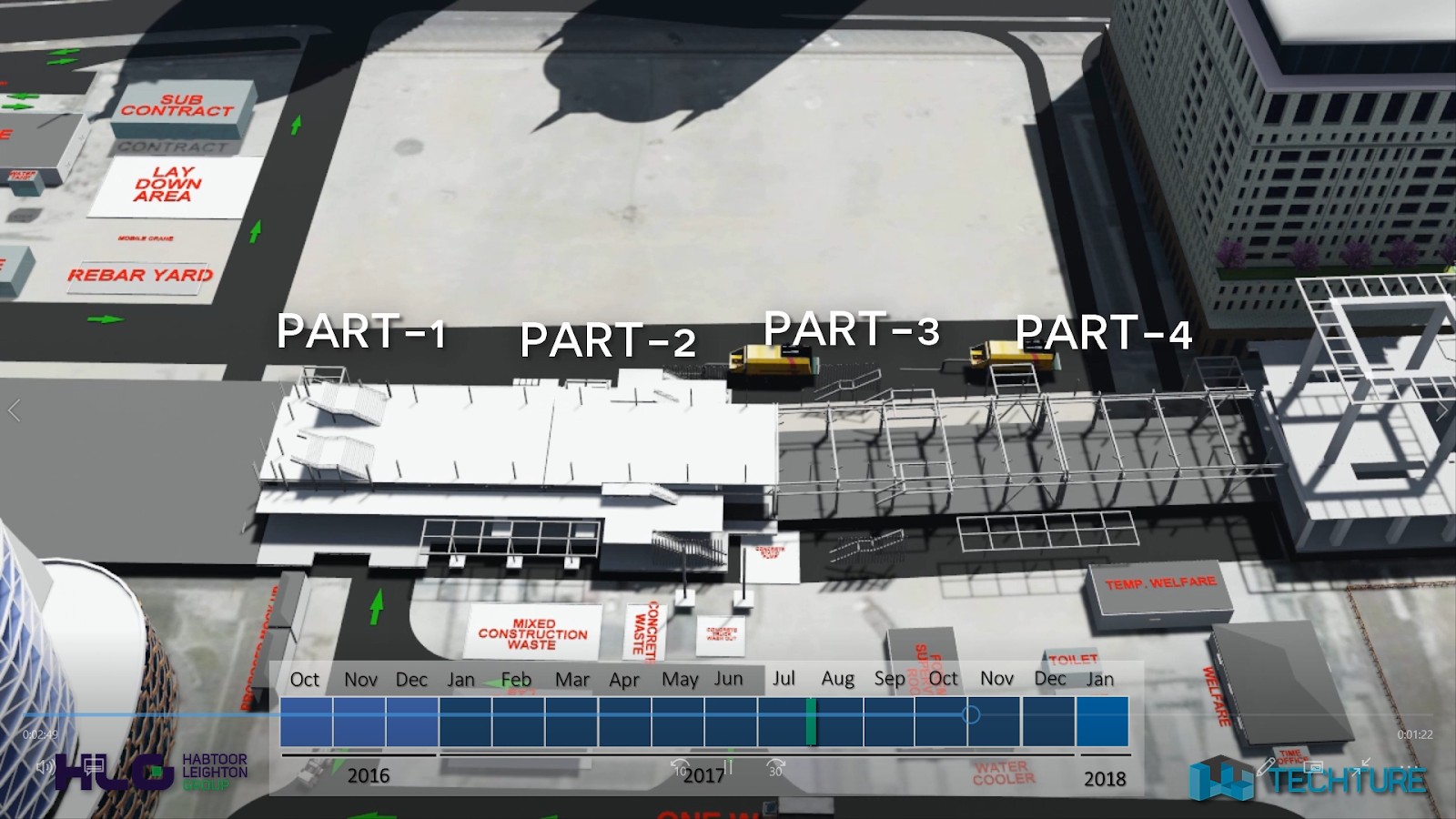
Benefits of 4D Simulation
4D simulation offers numerous benefits that make it very efficient in the modern construction industry. There are several benefits, like:
- Enhanced Visualization: Understand the construction sequence through animated simulations.
- Improved Construction Scheduling: Identify dependencies and manage timelines effectively.
- Real-Time Project Tracking: Monitor progress and compare planned vs. actual schedules.
- Conflict Resolution: Detect and resolve scheduling clashes before they occur on-site.
- Better Stakeholder Communication: Use visual simulations for effective presentations.
- Optimized Resource Allocation: Plan labor, equipment, and materials more efficiently.
- Safety Planning: Integrate project safety considerations into scheduling.
Key Applications and Use Cases
4D simulation is used in various scenarios across the construction lifecycle:
- Tender Presentations: Demonstrate a well-planned construction sequence to win bids.
- Site Logistics Planning: Visualize space usage for materials, equipment, and personnel.
- Safety Planning: Simulate hazardous zones and emergency access paths.
- Progress Monitoring: Track site activity and compare it with the baseline schedule.
- Renovation and Retrofit Projects: Coordinate works around existing operations.
Tools and Software for 4D Simulation
Many construction scheduling software tools support 4D simulation. Here are some of the leading options:
- Navisworks: Integrates with Revit and Primavera to simulate construction sequences.
- Synchro 4D: Offers advanced scheduling, animation, and resource planning tools.
- Bentley OpenBuildings: Supports complex infrastructure projects.
- Vico Office: Provides cost-loaded scheduling with 4D simulation.
- Autodesk BIM 360: Cloud-based platform for collaboration and simulation.
These tools help teams engage in virtual design and construction (VDC), promoting accuracy and collaboration.
Step-by-Step Workflow: How to Build a 4D Simulation
- Prepare the 3D Model: Create a detailed BIM model using software like Revit.
- Define the Project Schedule: Use tools like Microsoft Project or Primavera P6.
- Link Tasks to Model Elements: Associate model components with schedule activities.
- Run the Simulation: Generate a timeline-based visual sequence.
- Analyze and Optimize: Adjust tasks and resources based on the simulation.
- Review with Stakeholders: Present simulations to identify concerns and finalize plans.
Challenges and Limitations
Despite its advantages, 4D construction planning comes with certain challenges:
- Steep Learning Curve: Requires training and expertise.
- Integration Issues: Software compatibility can be problematic.
- Data Consistency: Requires accurate and updated data to be effective.
- Initial Setup Time: Creating a 4D model can be time-intensive initially.
Future of 4D Simulation and BIM Integration
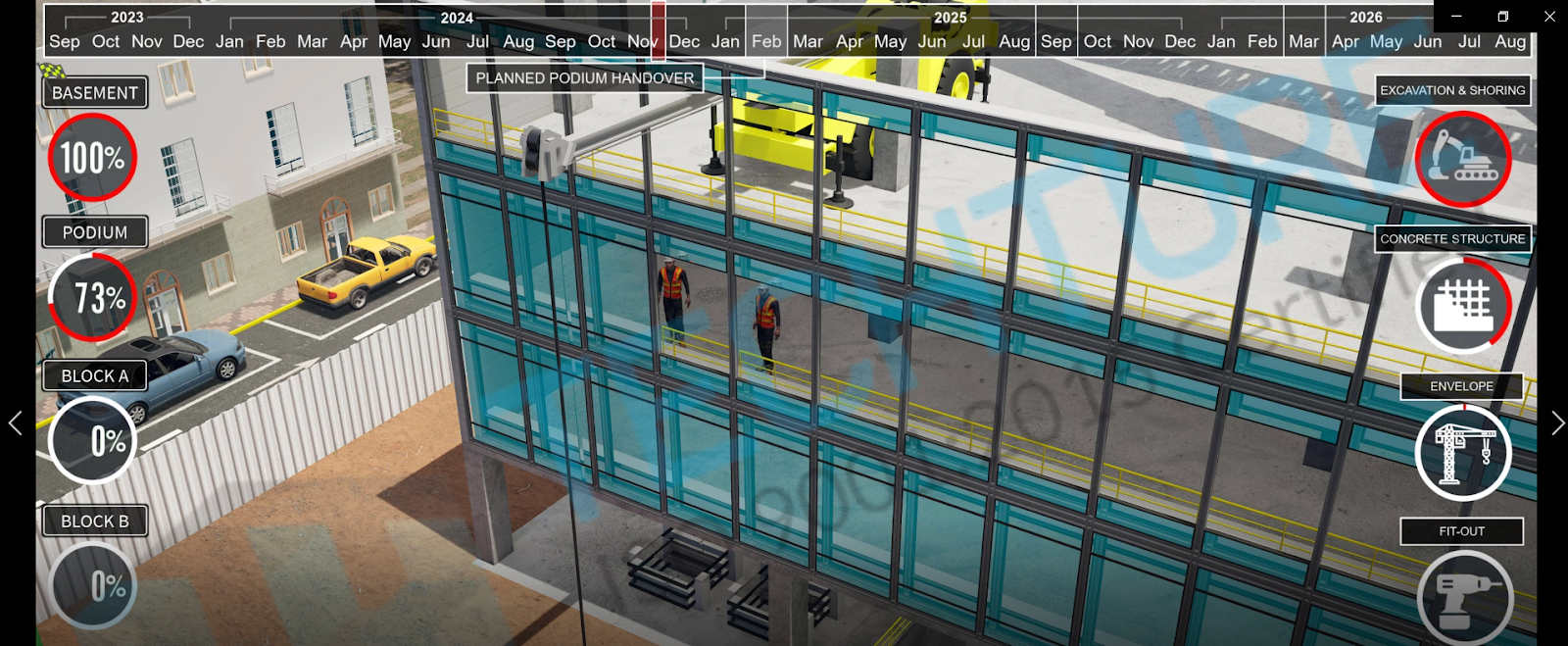
The future of 4D simulation is closely tied to the growth of integrated BIM platforms and emerging technologies. Here are some trends:
- AI and Machine Learning: Automate scheduling and risk detection.
- Real-Time Data Integration: IoT sensors feeding live data into the 4D model.
- Enhanced Interoperability: Improved compatibility across software ecosystems.
- Cloud-Based Collaboration: Simulations accessible anywhere, anytime.
- Tighter Integration with 5D/6D/7D: Deeper insights across cost, sustainability, and operations.
Conclusion
4D simulation is more than a technological upgrade—it's a paradigm shift in how we approach construction. By integrating construction scheduling software with 3D BIM, teams gain a comprehensive view of the project timeline and execution. The result is smarter planning, better collaboration, and fewer costly surprises.
Whether you're working on large-scale infrastructure or a small renovation, embracing 4D simulation can vastly improve project outcomes. As BIM dimensions continue to expand, the future of construction will be increasingly interconnected, data-driven, and visual.
FAQs
1. Is 4D simulation only for new builds?
No, 4D simulation can also be applied to renovation, retrofit, and maintenance projects by incorporating existing building data.
2. Can 4D simulation be used on small construction projects?
Absolutely. While it’s highly beneficial for complex builds, even small projects can leverage 4D construction planning to avoid delays and improve coordination.
3. What types of data are required to create a 4D simulation?
You'll need a 3D BIM model, a detailed construction schedule, and sometimes resource data (e.g., manpower, equipment).
4. How does 4D BIM support health and safety planning?
4D simulation can visualize site conditions over time, helping teams identify and mitigate safety risks during each project phase.
5. Can 4D simulations detect scheduling conflicts?
Yes, one of the primary benefits of 4D simulation is its ability to reveal conflicts in construction activities and help resolve them before execution.


